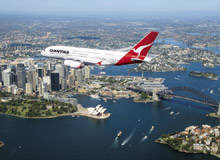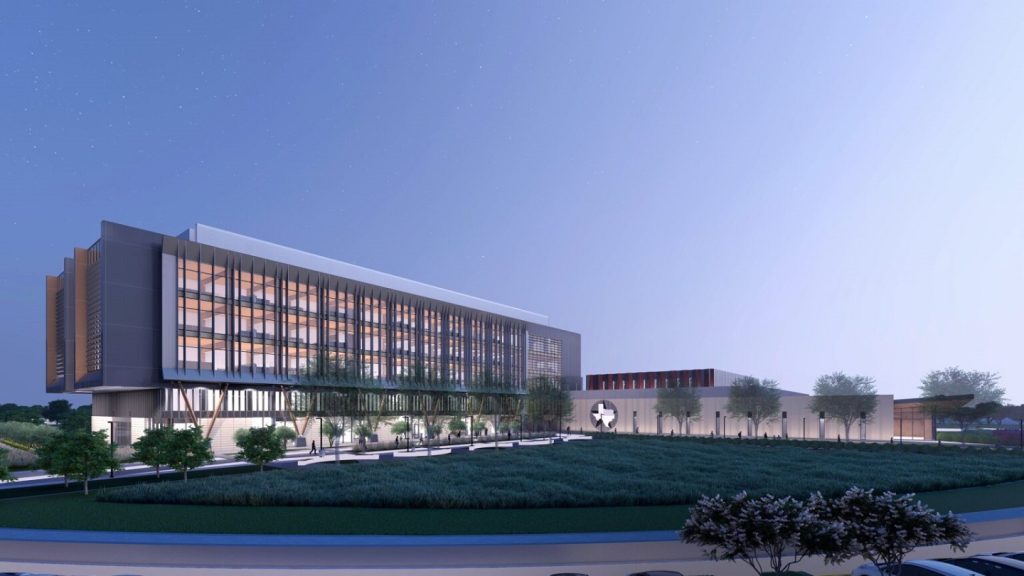
When Qantas’s first Airbus A380 took to the sky in October 2008 for its inaugural flight from Melbourne to LA, business and first-class passengers were given a signed copy of a new book by industrial designer Marc Newson, who created the cabin of the double-decker superjumbo.
Flight of fancy
“I am always in the air,” admits Newson. “The more you fly, the more you look around as a designer.”Although the Qantas A380 project started six years ago, the Australian carrier’s creative director has long been fascinated by aviation design. “That is where so much technology is born, but on an aesthetic and cultural level, they are in the dark ages.”
Newson is in London at the suitably futuristic IMAX theatre where Qantas is launching its new Sydney–London routes on their A380s. Despite the global economic malaise, the carrier’s affable executive general manager John Borghetti is a happy man. No wonder. Thanks to Newson, Qantas has brought the cool back to long-haul travel.
Aviation has had a big influence on Newson’s career. “I have always loved the aerospace industry,” Newson tells me. Indeed the design piece that made his name, the 1986 Lockheed Lounge, a curvaceous fluid divan made from aluminum, was inspired as much by fetishised aerodynamics as 18th-century French chaises longues. As well as the A380, Newson has also
designed Qantas’s first-class lounge at Sydney Airport.
See Also:
High design
How well do you really know your competitors?
Access the most comprehensive Company Profiles on the market, powered by GlobalData. Save hours of research. Gain competitive edge.

Thank you!
Your download email will arrive shortly
Not ready to buy yet? Download a free sample
We are confident about the unique quality of our Company Profiles. However, we want you to make the most beneficial decision for your business, so we offer a free sample that you can download by submitting the below form
By GlobalDataThe Qantas A380 project was not just the largest project the 45-year old Australian-born designer has ever undertaken, it’s also his most ambitious. Newson was responsible for the design of the cabin as well as the seating, lighting, toilets, handles and even the cutlery. Inside the world’s largest airliner you will be hard pressed to find anything that has not been touched by the creative hand of the London and Paris-based designer. “It is one thing to design the interior but I wanted to design the whole experience,” says Newson. “It’s not good for me just to design an interior and then go off and get someone else’s knives or forks. I mean, why would I? That is what I do.”
While Newson is best known for his sculptural designs, he spends most of his time on complex industrial design commissions for companies like Alessi and Cappellini. Newson has applied his creativity to aircraft before with his styling of the Dassault Falcon 900B executive jet in 1998 and his Kelvin 40 concept jet, for Fondation Cartier, in 2004. In 2007 he even designed a spaceplane for Airbus parent company EADS Astrium.
The Airbus A380 is the biggest civil aviation project since the Boeing 747 jumbo jet and Newson approached it with an eager sense of enterprise. “It’s a once-in-a-lifetime opportunity,” explains Newson. “Planes like this don’t happen that often.”
Qantas has ordered 20 of the behemoths – allowing Newson to pioneer a new type of design path on the huge 560t aircraft. Leaving behind the drab conservatism that has characterised aircraft interiors for decades, Newson approached the project in a completely different way.
“Airplanes are wonderful things,” he enthuses. “Why would you want to make it look like a living room?” Despite this Newson faced big obstacles, most significantly in navigating very strict safety parameters, working with a pan-European aircraft manufacturer and subcontractors as well as one of Australia’s biggest companies.” I work in a lot of different industries but none of them are like aviation,” he says. “It’s very
restrictive but it’s important to work through these problems. If you can’t, I don’t think you are really a designer.”
Despite the super-strict regulations, the sheer size of the interior – the A380 has 49% more cabin space than the Boeing 747 – gave Newson plenty to play with. Qantas A380s have 450 seats across four classes (14 in first, 72 in business, 32 in a spacious premium economy and 332 in economy). This is fewer than Emirates with 489 seats and Singapore Airlines with 471 – the two other early customers for the A380.
Newson’s brief was to accommodate the maximum number of passengers comfortably in the space available. “It felt like second nature to me, even though it was for an aeroplane. I knew what needed to be done.”
Cloudburst of colour
When you step onboard one of Qantas’s shiny new A380s the first thing that strikes you are the earthy colours – subdued greens and reds blended with soft greys. Newson has evolved a soberer version of the decadent ‘retro-futurist’ style that he developed in the 1990s and that has been ruthlessly imitated ever since. But the cabin design’s real impact is in the less showy details – the slimmer economy seat that gives you an extra inch of legroom and light-emitting
diodes that subtly illuminate the cabin with light that changes through the course of a flight.
Newson combined materials, like carbon fibre and sheepskin, in a simple but unique ways. Throughout the cabin there are custom-made finishes for seat backs, wall panel and floor coverings that feature the designer’s touches like his honeycomb pattern on the carpets and seat backs. It is understated and intelligent contrasting the ostentatious approach that has been taken by other A380 operators.
He admits that he is a control freak and describes to me how he thought long and hard about materials, finishes and functionality – criteria that airlines are not renowned for paying much attention to. Economy class is state-of-the-art and simple. Carbon fibre seats manufactured by Recaro, which makes seats for luxury auto brands such as Aston Martin, are very light and compact.
Each of the 14 first-class suites provides each passenger with their own zone, decked out in beige with an ottoman and a 21.5in-wide armchair that swivels or rolls out to form a flat 2.12m bed complete with a foam mattress, exclusive sheep overlay and fitted cotton sheets. You can adjust seat, privacy screens, massage system and entertainment on the touch screen 43cm LCD television. The suites are finished in Edelman leather and wood.
Business class features an enhanced Skybed sleeper seat that converts electronically into a fully flat, 80in-long bed. Its fixed cocoon design and large electronically deployed screens provide plenty of privacy.
All passengers, whatever class, are supplied with cotton-covered pillows and lambswool blankets, and a Panasonic entertainment system, complete with internet access.
At present Newson’s A380 serves flights between Sydney or Melbourne and Los Angeles and the ‘kangaroo route’, London to Sydney, via Singapore. Does the designer have any tips for dealing with long-haul flights? “I think the trick is not to fly terribly often,” he says. For Newson that must be pretty hard at the moment.




